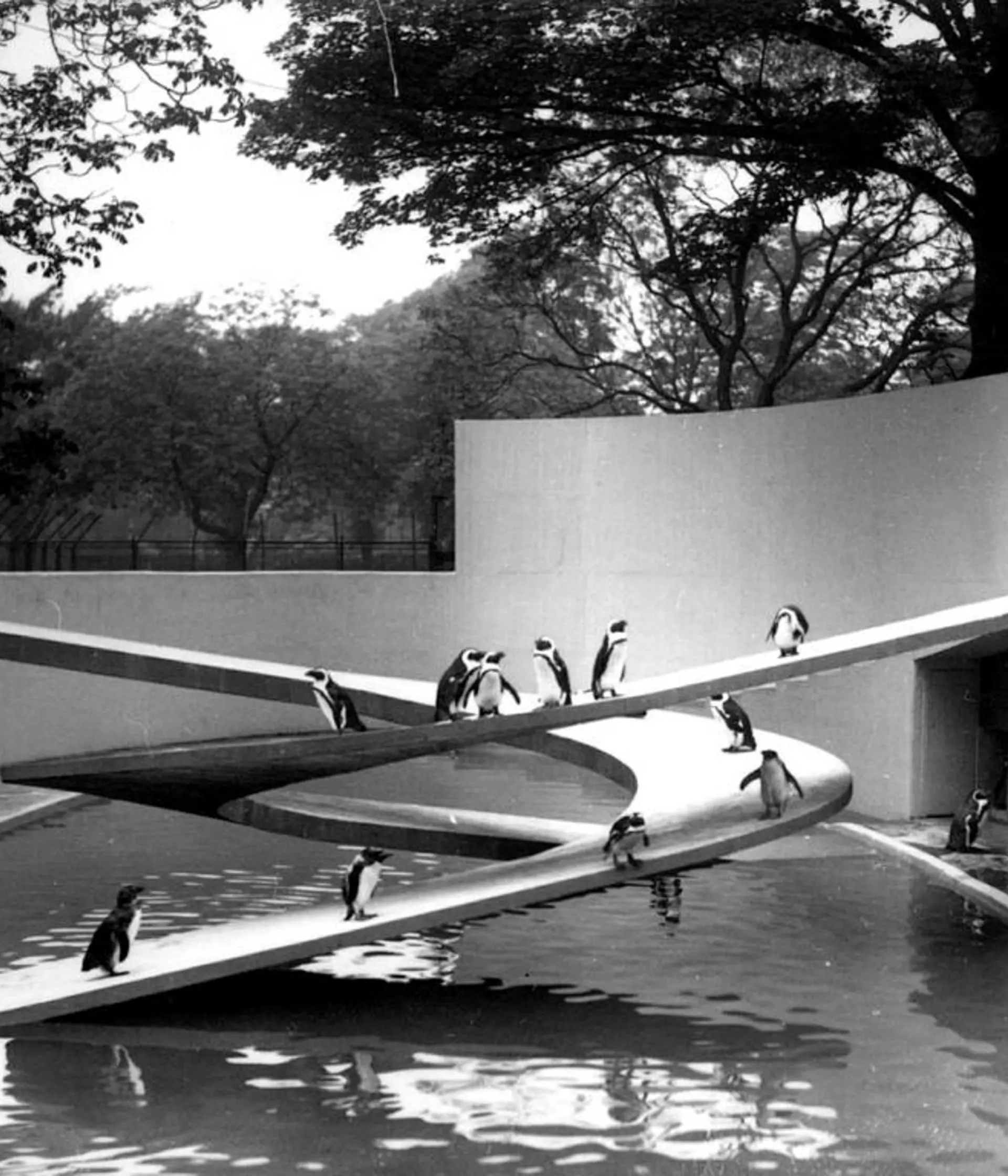If there’s one landmark at the Zoo that sums up our history of architectural innovation, it’s the Lubetkin Penguin Pool, completed in 1934.
Berthold Lubetkin design
This striking enclosure was designed by Georgian-born Berthold Lubetkin, part of the Tecton Group of architects.
The Penguin Pool was Tecton’s second commission from ZSL, after the warmly received Gorilla House. Built around an elliptical pool, it features two interlaced spiral ramps made from reinforced concrete – a revolutionary material at the time. To realise his vision, Lubetkin worked with concrete specialist Ove Arup, who would go on to be knighted as one of the leading structural engineers of his era.
Penguin Pool modernist architecture
Lubetkin’s Penguin Pool was both technically impressive and visually dramatic, designed to clearly showcase the penguin’s behaviour to visitors. It included open viewing windows rather than cages, built-in nesting boxes for the penguins, a glass-fronted diving tank and a revolving fountain.
The Penguin Pool was quickly hailed as a classic of modernist architecture, which favoured innovative materials and technologies, functional forms and clean lines. It helped to make the names of Lubetkin and the Tecton Group, as well as helping establish Arup’s reputation for innovation in casting reinforced concrete.
Some penguins are gay. Get over it.
Over the following decades, countless visitors enjoyed watching the penguins without any bars in the way, including the young royal Princesses Elizabeth and Margaret, who visited the Penguin Pool in summer 1939.
As scientific knowledge of penguin care grew, however, the pool’s shortcomings became more obvious. Concrete wasn’t the healthiest material for penguin’s feet, and the penguins were moved out to more spacious accommodation.
Harry Styles at London Zoo
Today, the Penguin Pool is Grade I listed by English Heritage for its architectural interest, and carefully maintained in order to preserve its original design.
It’s also available to book as one of the Zoo’s filming locations. The pool featured in the video for Harry Styles’ chart-topping hit “As It Was” in spring 2022, with the singer popping in to film the scene before the Zoo opened to the public.
But if it’s penguins rather than pop stars you’re looking for, these days you’ll need to head over to Penguin Beach, opened in 2011 and modeled on our Humboldt penguins’ real South American habitat, with a sandy floor and a deeper pool for diving.
